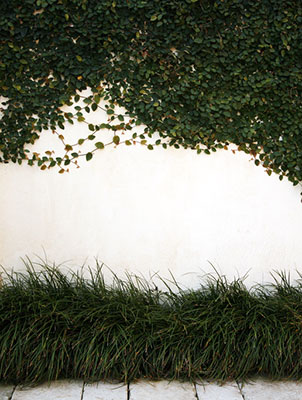Creeping Fig

Creeping fig (Ficus pumila) is considered to be a high invasion risk by the UF/IFAS Assessment of Non-Native Plants in Florida’s Natural Areas and is no longer recommended. Learn more at the assessment’s website.

Creeping fig (Ficus pumila) is a fast-growing vine that has been used to soften the look of walls and fences. The plant’s wandering stems and small leaves create an interesting lacy pattern as the vine grows across the wall. It is also used as a groundcover.
Creeping fig will grow in sun or shade, and it tolerates salt spray. If there’s a freeze, the leaves will turn brown and fall off but usually come back in spring. This vine needs well-drained soil and moderate moisture until it becomes well established.
You will need to be vigilant with your pruning to keep this vine in check. If you use this plant as a groundcover near a wall or building, it will grow onto the wall very quickly. To prevent this, clip the edge of the groundcover regularly. Plus, the vine’s adhesive pads make it hard to remove, so consider planting it on privacy walls, but avoid the walls of your home. It can damage wooden structures.
Another common use for creeping fig is in topiaries. Since it holds tight and grows quickly, it can easily cover just about any topiary form.
Also on Gardening Solutions
More from UF/IFAS
- Ficus: Trees and Vine of Florida (PDF; a thorough description all of ficus species)
